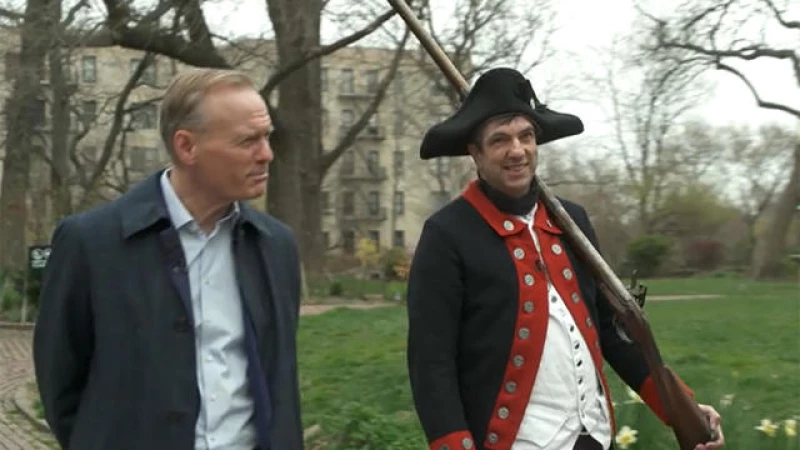For over a year now, A.J. Jacobs has been donning woolen leggings more frequently than most people put on socks. Why? "A couple of years ago, I realized I had never read the American Constitution," he explained. "But every day I'd open the news and there's another story about how this 230-year-old document is affecting our lives. And I said, I need to know more about our founding document. And the way I like to learn is, I like to go all-in."
For Jacobs, going all-in means complete immersion. In his bestselling book, "The Know-It-All," Jacobs spent 18 months reading the entire Encyclopædia Britannica. In "The Year of Living Biblically," he attempted to follow all the rules in the Old and New Testaments. And now, his latest endeavor: "The Year of Living Constitutionally."
"I do look deeply absurd," he admitted, dressed in late 18th-century attire. "But I am also deeply serious about this project. Part of my goal is to get inside the minds of these Founding Fathers as much as I can."
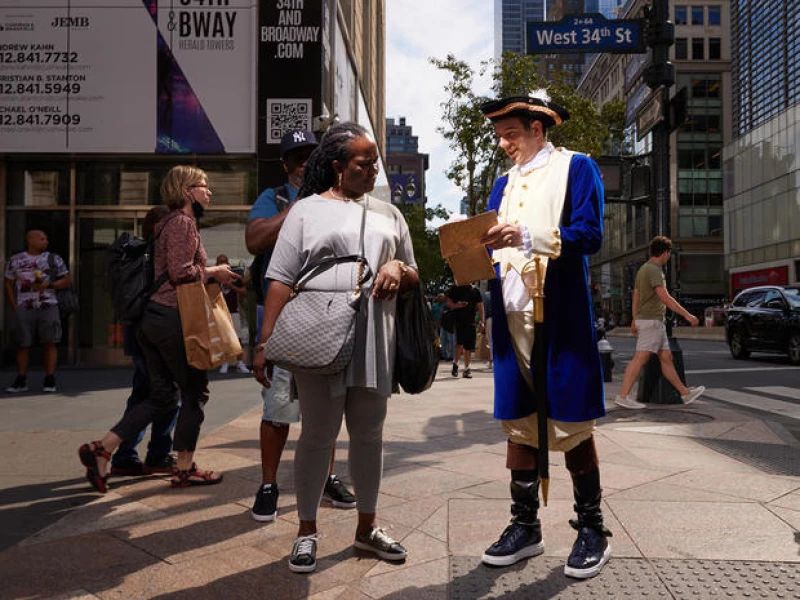
The Revolutionary Enthusiast
Embracing his passion for history, Jacobs recently became a member of the New Jersey Third Regiment of Revolutionary War Reenactors. Displaying his musket to fellow reenactor Dickerson, Jacobs proudly stated, "This is the real deal from the 1700s. I got it online, which I assume is not how they did it back then."
Despite the commitment of the reenactors, Jacobs mentioned that they were using blanks instead of lead balls during their performances.
During one reenactment, Jacobs humorously claimed, "I did die for my country, but I died in the shade."
Expanding his interest in history and firearms, Jacobs decided to exercise his Second Amendment rights by carrying his antique firearm around New York City. He recounted an incident at a coffee shop where a man in line let him go ahead, stating, "I'm not messin' with you."
During a visit to the 1765 Morris-Jumel Mansion in Manhattan, Jacobs shared insights on the fears of the Constitution's creators. Reflecting on the post-war context, he explained, "They had just fought a war to get rid of the monarch. That's one of the most brilliant parts of the Constitution, is how they built in these mechanisms to stop one person or one branch from taking over, this balance of power. I never really appreciated the balance of power. It has helped keep us from having a tyrant. So far!"
Jacobs' research also took him to Washington, D.C., where he delved into the First Amendment right to petition the government. Jacobs brought along his own petition, a long scroll with 423 signatures, to Oregon Senator Ron Wyden, to reconsider Ben Franklin's idea of having more than one president. Wyden remarked, "You are injecting logic and common sense, which often is lacking in public discourse."
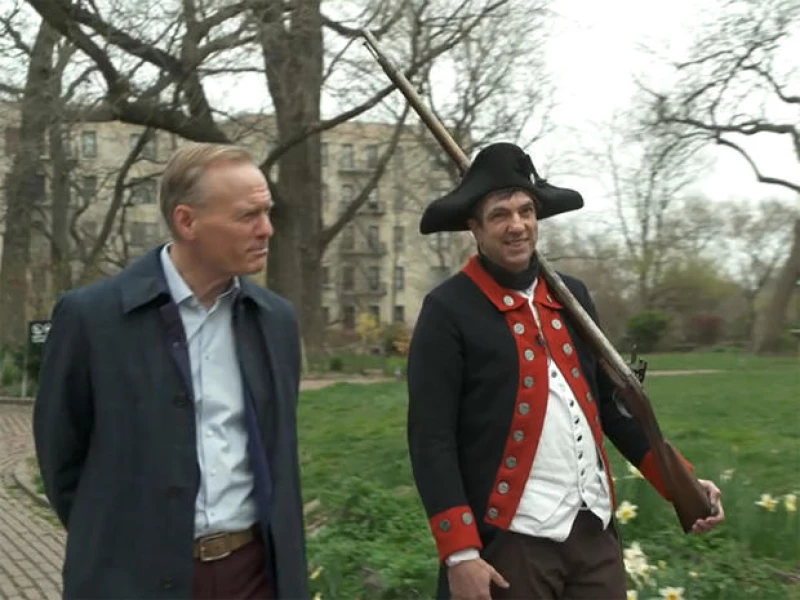
So, how was the petition received? "I think he considered it for about five seconds, and that was the end of the consideration!" Jacobs laughed. "I will say he totally bought my underlying thesis that the president has too much power."
While conducting his research, Jacobs used a quill pen, which meant living the rest of his day with stained fingertips. "I love writing by hand," he said. "There is something wonderful about taking out a quill pen, dipping it in ink, and just writing those sentences. I love the sound of the scratch, scratch, scratch."
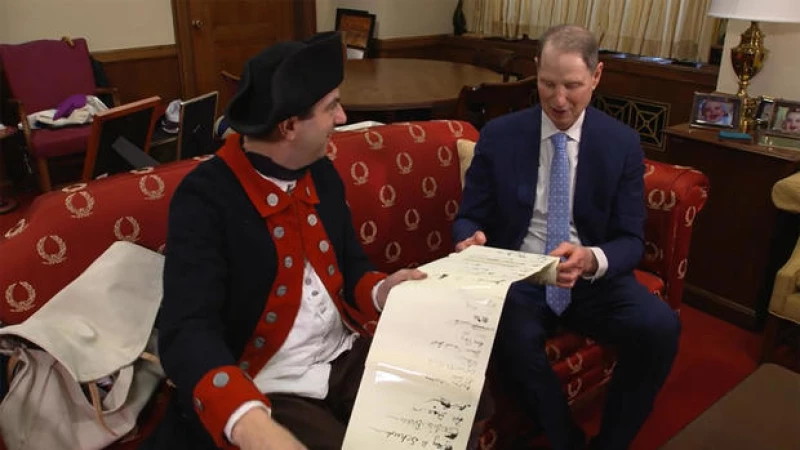
A.J.'s wife of 24 years, Julie Jacobs … not so much. "We've lived through a lot together," she said. "So, this is nothing! This is nothing."
Asked if she is the World's Most Patient Wife, Julie laughed, "I think so! Feel free to call me St. Julie whenever you like!"
A.J. not only wrote with a quill pen, he scratched his words onto parchment, which is not paper; it's stretched and dried animal skin, like sheepskin. To learn how it's made Jacobs got a lesson from brothers Jesse and Stephen Meyer, who run Pergamena, one of the few places parchment is made in North America.

Asked to describe the smell, Jesse Meyer replied, "Somewhere between rotting flesh and really strong cheese."
That same process was used to create the Constitution, which now rests under glass, displayed at the National Archives in Washington, protected by unbreakable glass.
"People come here and they look at it and they're rejuvenated," said historian Jessie Kratz. "And maybe they will go vote, not just in a presidential election, but maybe in a local election."

Jacobs said, "I don't wanna say 'Just read the Constitution.' That's not really the point. Read the Constitution and talk about it with people, especially with people who disagree with you. That, to me, is what democracy is about."
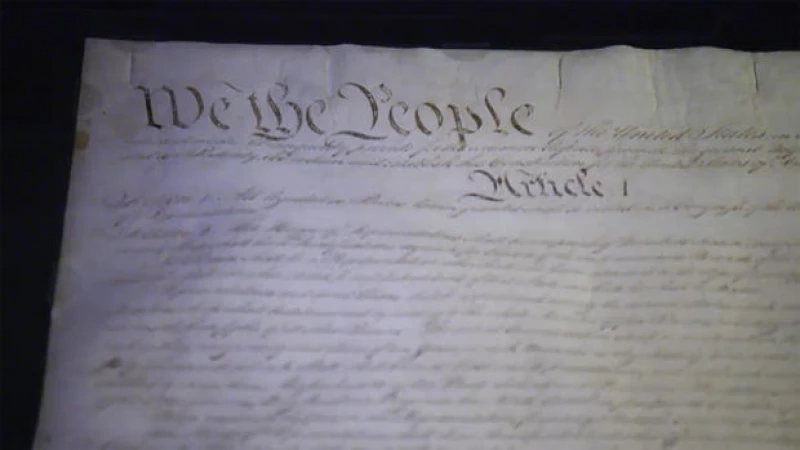
All this running around might seem like a gimmick, but Jacobs says the immersive approach helped focus him on the key lessons of the system we all still live under today. "They thought about rights, but they also thought about responsibilities," he said. "It was so ingrained in them that they had a responsibility to their community, to their country. But I feel we've lost some of that. It's all about putting others before yourself sometimes."
That lesson isn't just a pleasing notion; it is vital to the Constitution's survival.
Asked if his project made him more optimistic or pessimistic, Jacobs replied, "George Washington sat in a wooden chair at the Constitutional Convention. And it had a carving on the back of the sun, but not the full sun, just half of the sun, the top half. So, you couldn't tell: Is it setting, or is it rising? At the end of the Convention, against all odds, they have this Constitution. Ben Franklin says, 'Now I know the sun is rising on America.'
"And my question was: Is the sun still rising on America? It's up to us. 'Cause if we do nothing, then the sun will set."
READ AN EXCERPT: "The Year of Living Constitutionally" by A.J. Jacobs
For more info:
- "The Year of Living Constitutionally: One Man's Humble Quest to Follow the Constitution's Original Meaning" by A.J. Jacobs (Crown), in Hardcover, eBook, and Audio formats, available May 7 via Amazon, Barnes & Noble, and Bookshop.org
- The Morris-Jumel Mansion, New York, N.Y.
- Third New Jersey Regiment, the Jersey Blues – Revolutionary War Re-enactors (Facebook)
- Pergamena, Montgomery, N.Y.
- National Archives, Washington, D.C.
- Thanks to photographer Reed Young
Story produced by Jay Kernis. Editor: George Pozderec.

